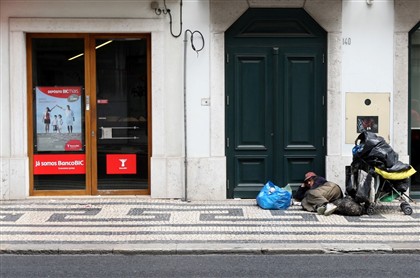
Population at risk of poverty remains in 2014, but situation worsened for women
- admin
- October 13, 2015
More than 2.8 million people in Portugal were at risk of poverty or social exclusion last year.
The population at risk of poverty and social exclusion in Portugal remained at 27.5% in 2014, reaching more than 2.8 million people, according to provisional data from the INE, pointing to a worsening situation for women.
Although the percentages do not show a change between 2013 and 2014, there were 14,431 fewer people in poverty risk or social exclusion last year, totaling 2,853,076.
This may have been a reflection of the population living in Portugal have declined in those two years, from 2,867,507 in 2013 to 2,853,076 in 2014.
According to the updated data of the Survey on Income and Living Conditions (ICOR), 28.1% of women living in Portugal were at risk of poverty or social exclusion last year, a percentage that represents 1,531,774 women.
Compared to 2013 there was an increase of 0.7%, referred to data from the National Statistics Institute (INE).
Among males, the situation was reversed with a reduction of cases of risk of poverty or social exclusion: in 2014, there were 1,314,619 men in this situation (26.7%), 0.8% less than the year above.
Resident population indicator at risk of poverty or social exclusion combines two indicators constructed on the basis of information concerning the income reference year (poverty risk rate after social transfers and labor intensity per very small capita) with a window with information about the year of the survey (severe deprivation rate stuff).
Between 2009 and 2014, the resident population at risk of poverty or social exclusion increased from 24.9% to 27.5% in 2014.
Provisional data from the INE for 2014 on the situation material deprivation indicate that this year 25.7% of residents in Portugal live in material deprivation and 10.6% in a situation of deprivation severe material, similar to the data in the previous year.
Families with children are the ones most frequently found material deprivation (26.3%) and severe deprivation equipment (11.3%).



 Português
Português English
English